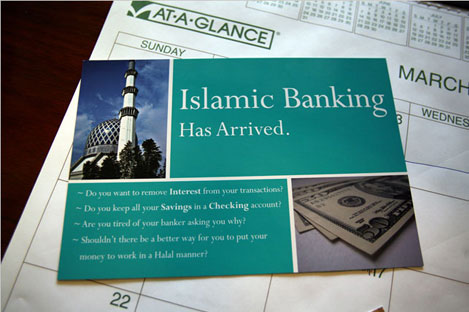Author: Rushdi Siddiqui
Co-founder and MD of Azka Capital, Private Equity Advisory & Advisor to Thomson Reuters on Islamic finance and Halal industry.
Everyone is curious, intrigued and fascinated by lists. The lists may be about:
Top 10 destinations for Muslim travel
Top 10 Islamic banks, Takaful operators, funds, etc
Top 10 Shariah scholars on Shariah Boards
As 2013 is drawing to close, there are 10 challenges in Islamic finance and the Halal industry that need to be raised and collectively addressed for 2014 and beyond.
Five Islamic finance pillars
1. Countries, Muslim or non-Muslim, which declared themselves as Islamic finance hub countries must do more than photo-ops and Press releases. They need to establish an enabling infrastructure, which shows commitment, entailing training local Shariah and non-Shariah personnel, tax neutrality, and accounting aligned to AAOIFI, a regulation that produces a level playing field, and seed money for funds and public relations.
2. There is greater need for applied, over academic, research in the area of safety nets (like deposit insurance and lender of last resort), building out the Islamic equity capital market as the bias is towards debt capital markets, examining merits of national mortgage company, like Malaysias Cagamas, to facilitate the housing market with its natural multiplier effect on local suppliers, employment, etc.
3. The time has arrived to raise the bar on Islamic business education by establishing an Islamic business school modelled after Harvard Business School, with focus on case studies, group projects, highly qualified entrants with several years of actual work experience, etc.
4. The consolidation of Islamic industry bodies to address: (1) lack of cooperation and coordination (silo approach today), (2) resource challenges, and (3) sharing operational resources. It may be led by globally recognised and respected AAOIFI, and would allow for a meaningful input during deliberations when AAOIFI (accounting, auditing, governance, etc.) , IIRA (rating agency) , IIFM (documents on hedging, liquidity, etc), and IFSB (prudential regulations and capital adequacy) are at the table together to discuss, say, Basel III.
5. The continued de-coupling from conventional finance will place on the industry on the road to authenticity and indigenous innovation. The de-coupling started with Dow Jones Islamic Market Index (1999) as benchmark for Shariah compliant companies, DJ-CitiGroup Global Sukuk Index (2006), SAMI Halal Food Index (2011), Thomson Reuters Islamic Inter-bank Benchmark Rate (IIBR) in 2011, and recent development of Thomson Reuters/ICD Islamic Finance Development Indicators in 2013. Islamic finance took nearly 40 years to break the $1 trillion mark, and the goal is not $2 trillion, but profitable growth based upon financial inclusion of under/unbanked and cross-sell to non-Muslims because of aligned ethical values.
Convergence to Halal industry:
1. The $2.7 trillion halal lifestyle industry is in desperate need of a global industry body, like an AAOIFI, so that guidelines on certifications, certification bodies, and associated work flows are on one global platform to reduce the high information search costs, flush out unscrupulous vendors/products, provide traceability, etc. We will not come to standards in halal because of cultural, school of Islamic law, etc., but it’s better to have all the information and let the market decide.
2. Is it time for AAOIFI to amend its bylaws, by shareholder approval, to expand its mandate to include halal industry, but keep a Chinese’s wall between the two so as not encroach one existing committees?
3. Islamic finance, as an ethical financial intermediary, must finance the halal industry’s six vertical silos as Muslims are two plus dollar trillion niche market served and serviced by non-Islamic entities. According to 2103 State of the Global Islamic Economy report by Thomson Reuters, in collaboration with Dinar standards, its core sectors are structurally impacted by Islamic values and driven by end user, retail and business, needs and demands:
a. Food: $1.09 trillion expenditures (2012).
b. Clothing: $224 billion.
c. Travel: $137 billion.
d. Media/recreation: $151 billion.
e. Pharmaceuticals: $70 billion.
f. Cosmetics: $26 billion.
4. There needs to be an integrated halal park in major halal exporting countries like the US, which is the largest exporter of meat and live animals to the OIC, $17.3 billion in 2012, according to above-mentioned report and linked to parks in OIC countries, like Malaysia.
5. Today, the focus is on the process and method of slaughtering: the animal is stunned, gassed or neither and then slaughtered either by hand or machinery with the recitation of Almighty’s name, which may be recorded or live. Therefore, packages for lamb, beef, goat, chicken, etc., should have an easy to understand logo on method of slaughter. The consumer in the geography will decide what method of Halal slaughter resonates and part of their $2.3 trillion will decide.




